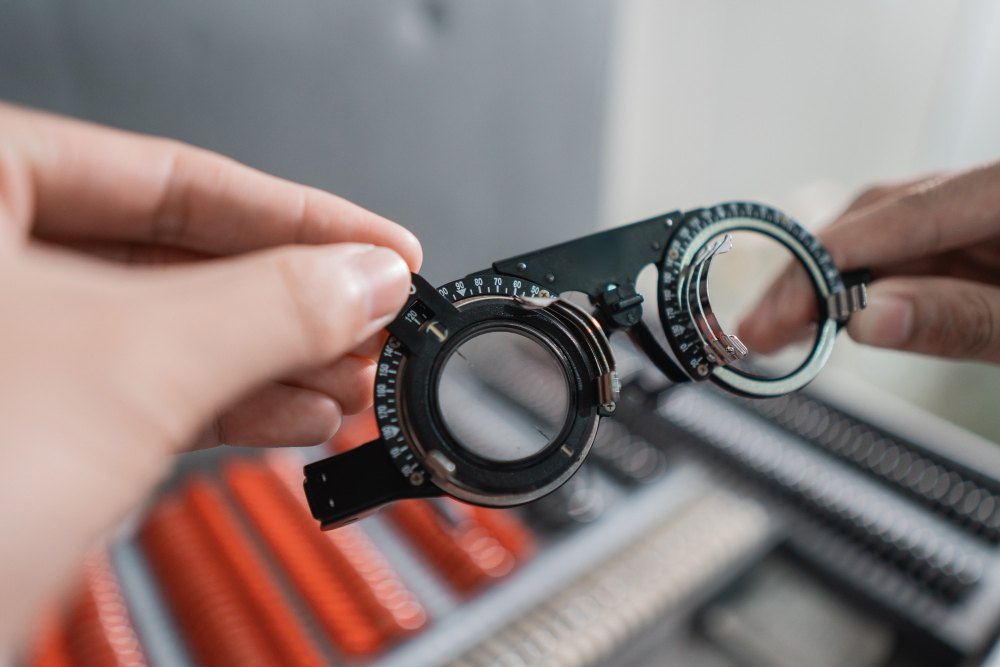
Have you just had an eye exam and feel confused about your glasses prescription? Don’t worry—not everyone understands those letters and numbers written on prescription slips.
First, you need to understand the ‘’axis,’’ the most crucial component of this prescription. You might have heard about this term before, but you should know what role it plays in shaping your lens.
In this blog post, we will provide you with all the necessary information about what the axis in glasses is and why it is so important to sharpen your view.
Let’s get started!
What is the Axis in Glasses?
Axis in glasses is the prescription value that informs your optician about the orientation of cylindrical power in your lenses to correct astigmatism. It only describes the position of astigmatism and does not tell how much astigmatism your eyes have. It can be any value between 0 and 180 degrees.
If the axis value is 90 degrees, it refers to the vertical meridian (from top to bottom). On the other hand, if the value is 180 degrees, it refers to horizontal merida (from side to side). And, if you see a higher axis value on your prescription, do not panic considering it a strong prescription because it only tells about the position of your astigmatism.
To be more precise, the axis is just like a secret code that allows your lens to align with your specific eye shape. Without a proper axis, you would be stuck in a world of blurriness and distortion.
What is the Normal Eye Axis?
If you have a normal eye axis, it means you don’t have astigmatism, or astigmatism in your eyes is not enough to require corrective eyewear. According to the American Academy of Ophthalmology, most people have 0.5 to 0.75 diopters of astigmatism. But you need eyeglasses or lenses for astigmatism only if this value is larger than 1.5.
So, in the case of a normal axis, your axis number on the prescription would be blank. This ensures that your eyes are aligned correctly. A normal eye axis allows you to see the tiniest of details clearly as light travels through your pupils and lands exactly where it should be on your retina.
Importance of Axis in Glasses Prescription
Axis plays a great role in correcting your vision. When an eye care doctor identifies and addresses it correctly in the prescription, your lenses would align exactly with the irregularities of your vision providing you better views than before.
On the other hand, a misaligned axis can cause other problems, like eye strain, fatigue, and severe headaches. So, by enhancing visual performance, the axis improves your overall quality of life, as you can perform different activities and hobbies with clear vision.
Signs of Axis-Related Issues in Glasses
Now when you are aware of what is the axis in glasses prescription and its role in your vision, let’s explore those signs that indicate an incorrect prescription, particularly related to the axis. Some of the major signs include:
✦ Blurred Vision
If you experience blurred vision even after wearing glasses, it indicates that the axis does not align properly with your eye’s curvature.
✦ Difficult Focusing
If you find it hard to focus on objects from different distances, it also indicates incorrect axis alignment.
✦ Headaches and Eye Strains
Frequent headaches or feeling of heaviness in your eyes after wearing glasses for long periods of time, is a clear indication of axis-related issues. In such cases, your brain finds it difficult to interpret the visual information.
✦ Off-center Vision
One of the most common signs of axis misalignment is that you may feel like your glasses are tilted or your vision is off-center. This clearly indicates that your lenses are not providing the accurate optical correction needed.
Conclusion
After understanding all the basics about ‘’what is axis in the glasses’, the next time when you visit an eye care center, you can easily communicate your concerns regarding the axis in prescriptions. Regular eye exams ensure optimal vision and address any issue related to axis misalignment.
In short, this short number ‘’axis’’ plays a significant role in how you see the world. So, whether you are going for glasses for the first time or updating your prescription, knowing exactly about the axis helps you enjoy clear vision.
FAQS
Technically, you can wear them, but it would lead to long-term eye issues, including discomfort, headache, strain, and incorrect vision. So, it is always recommended to get the right prescription for your eye axis and wear glasses according to it.
A typical eye prescription usually includes spherical value that indicates near sightedness or far sightedness, cylindrical value that measures astigmatism and axis that tells about the orientation of astigmatism.
No, it is not necessary. In fact, each eye can have a different axis depending on its shape and curvature. You can see the difference clearly in your prescription as well.
